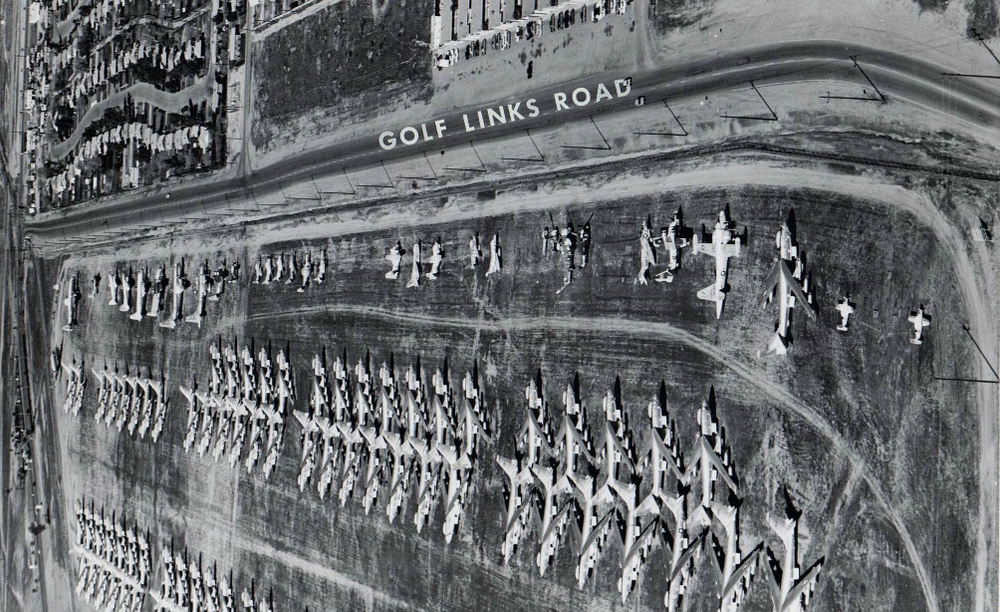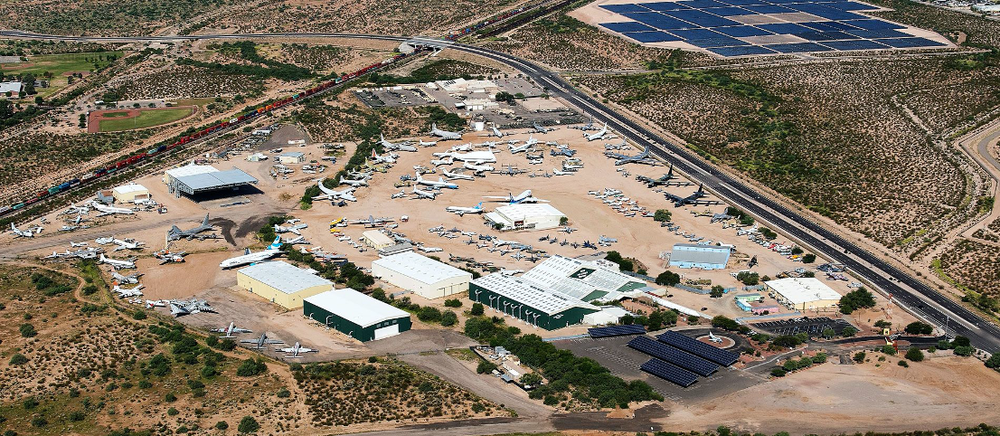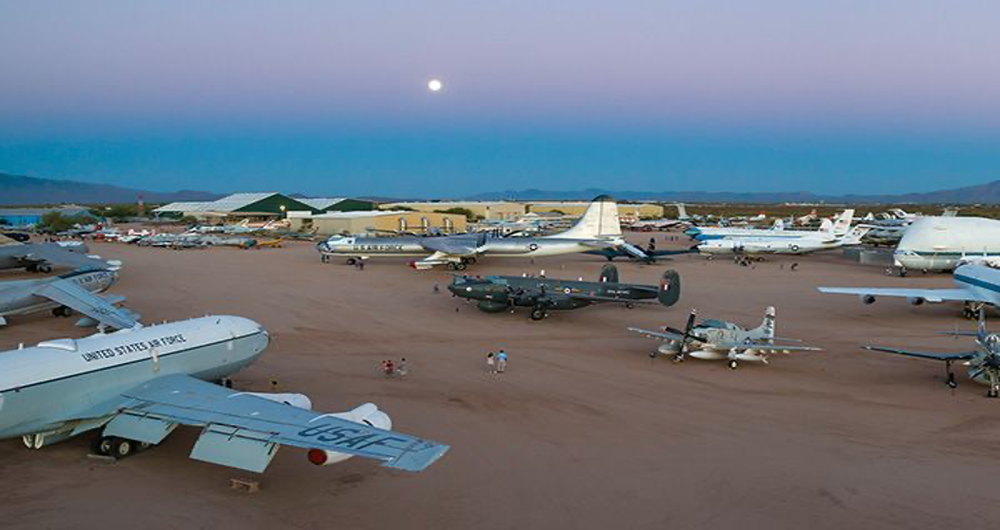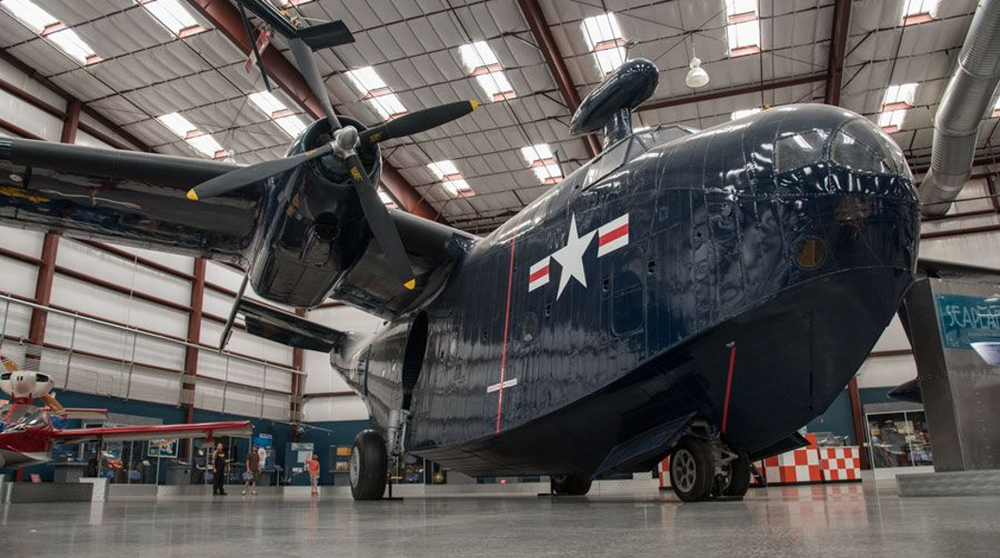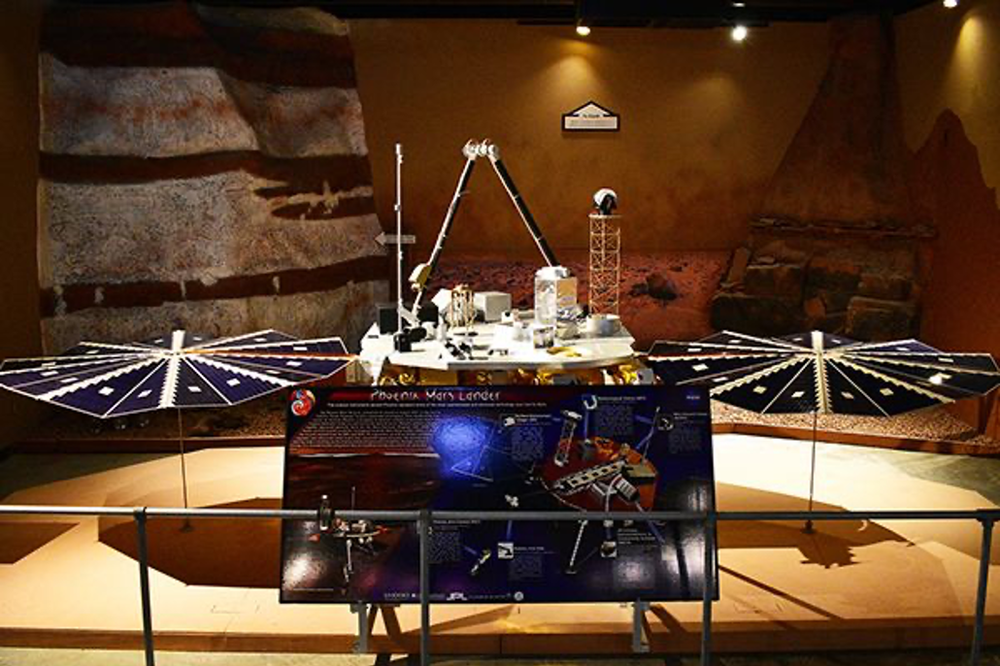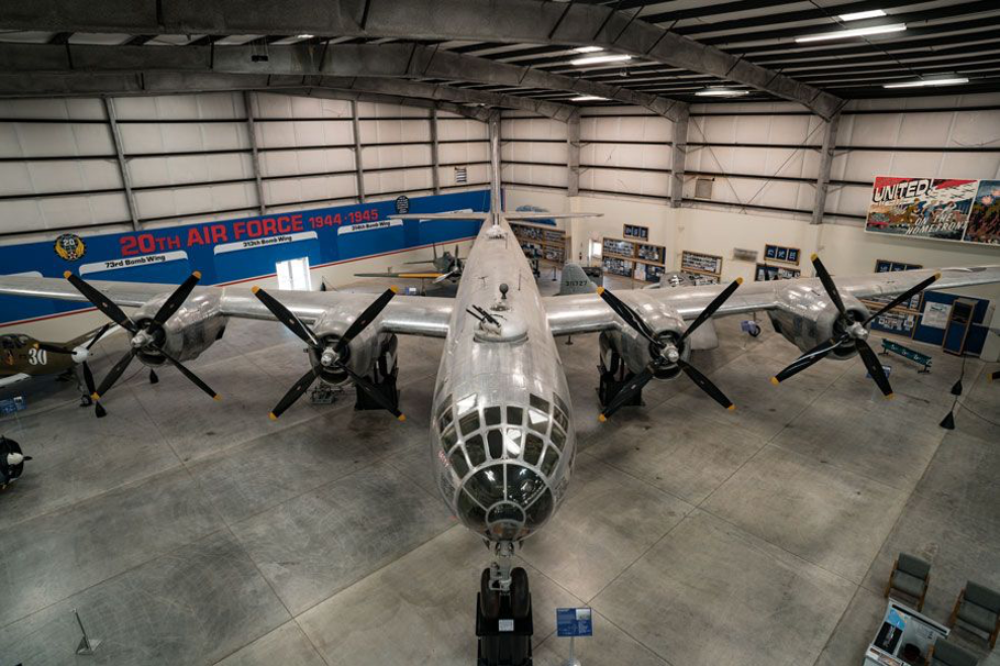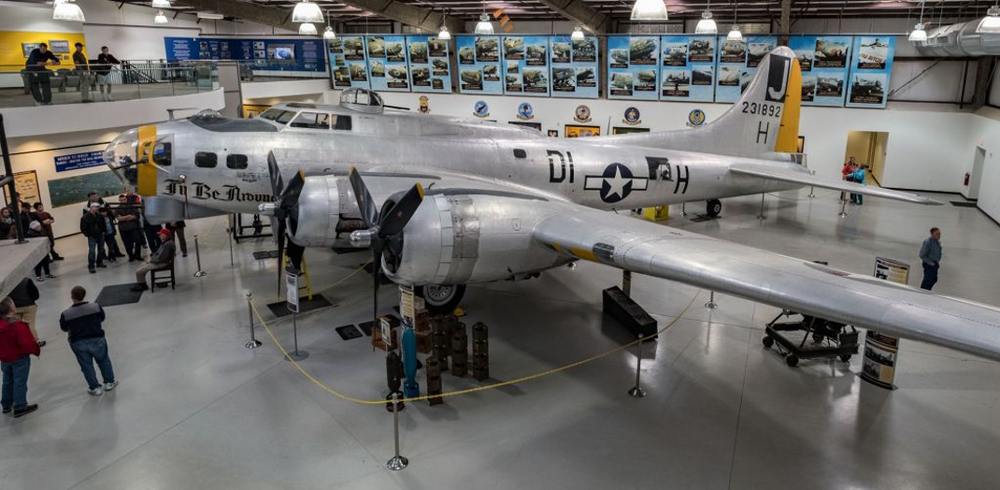Pima Air & Space Museum
About the Museum:
“Creating unlimited horizons in Aerospace education through the preservation and presentation of the history of flight.” The mission statement above, from the Pima Air & Space Museum, provides strong insight into the purpose of the facility. The facility is the third largest aviation museum in the world and one of the most well-known museums of it’s kind; located on an 80-acre area, it is home to over 300 aircraft and 125,000 aerospace artifacts. The Arizona Aerospace Foundation is a not-for profit organization and the operator of the Pima Air & Space Museum. This foundation is unique because it runs the museum solely through gate admissions, tours, concessions (such as the museum restaurant and gift shop) and donations. The foundation also operates the Arizona Aviation Hall of Fame, in Tucson, Arizona, and the Titan Missile Museum, in Sahuarita, Arizona.
History of the Facility:
The museum has a long history that dates back to 1966, which is also the year that the United States Air Force celebrated it’s 25th Anniversary. The concept for the museum was thought of by commanders located at the Davis-Monthan Air Force Base because they recognized the necessity for preservation of historical aviation equipment and artifacts. These commanders began to display planes, from the World War Two and 1950s eras, along the fence line of Davis-Monthan Air Force Base. The displays were visual to the public and quickly gained popularity because many individuals were interested in these historic artifacts. Although the community was thrilled with the ability to view these aerospace artifacts, it was still somewhat inaccessible.
Recognizing this issue, Colonel I.R. Perkin and other members of the Tucson chapter of the Air Force Association came together to devise a museum that granted the public access to the historical aircraft. This foundation, which was called the Tucson Air Museum Foundation, quickly garnered support from Pima County City and Parks and Recreation officials. This support led to money raised to purchase 320 acres of land just south of the Davis-Monthan Air Force Base. Eventually, on September 11, 1968, the land was awarded to Pima Country from United States Representative Morris K. Udall. Initially, the museum was authorized to fence and light about 30 acres to house the construction of Tucson Air Museum. This began the long process of acquisitions, of aerospace artifacts and aircraft, that would call the museum home. The first major aircraft that the museum purchased was a B-24 Liberator from India; this acquisition was celebrated by the U.S. Air Force, along with the Indian government, when the place had reached the Pima Air & Space Museum. By 1975, more than fifty aircraft, helicopters, and missiles had arrived at the site. This led to the opening of the museum on May 8, 1976, in alignment with the Bicentennial celebration of the formation of the United States. The early years of the museum were slow as the aircraft and artifacts were still being repaired, assembled, and placed throughout the facility.
Although the museum was still young and primitive, attendance was strong and the museum was able to expand. In 1980, the museum began the planning of its first permanent display which was aptly called “Hangar One.” This led to increase attendance and continued expanding of the facility; in 1984, the next building was constructed which was focused on World War Two history and the B-17 Aircraft. In 1987, construction of “Hangar Two” began and was used to house administrative offices, artifacts, archives, and more. Between 1990 and 1994, as strong attendance numbers continued to grow, the museum constructed “Hangar Three” and “Hangar Four.” These buildings were home to even more historic aircraft, which included the B-24J Liberator and the B-29 Super Fortress.
With the expansion of the museum, the foundation recognized that the Tucson Air Museum was no longer a fitting name for the facility. In 1992, the museum was renamed to its present calling: the Tucson Air & Space Museum. This name became even more accurate with the construction of the museum’s Space Gallery, in 1999, which included a full-size prototype of the Apollo Capsule and lunar rock samples. In the following years, the museum has continued to expand and add new buildings; as recently as 2015, a new building was constructed to house additional World War Two aircraft. With it’s 6 different exhibit hangars, the museum currently sits on over 80 acres of land.
Exhibits and Attractions:
Visitors can pay $6 for an all day tram ticket or can spend hours exploring all that is offered by foot. Guests can join the free walking tours led by museum docents. The facility provides visitors with many different exhibits to choose from: Outdoor Exhibits, the Main Hangar, the Space Gallery, the Hangar 3, the Hangar 4, the Hangar 5, and the 390th Memorial Museum.
The outdoor exhibit is home to a sculpture of 3 models of the Northrop-McDonnell Douglas YF-23. This prototype is designed to represent a twin engine fighter aircraft from the United States Air Force. Also located in the outdoor exhibit is “The Beacon,” which is a fifty three foot tower that was utilized in the 1920s to light airways across the United States.
The main hanger houses airplanes such as the SR-71 Blackbird, F-14 Tomcat, and F-4E Phantom II. The theme within the main hangar is that of iconic airplanes used throughout the United States history.
The space gallery exhibit, one of the most popular within the museum, houses moon rocks and a capsule from the Apollo 13 movie. Also within this exhibit are planes that have been utilized by the Air Force and NASA; included are the X-1, which broke the speed of sound barrier, and the X-45, which was used as a hypersonic test plane.
Next, hangar 3 is home to the B-24 Liberator and more World War Two aircraft, including the German “Buzz Bomb,” a rare piece of aerospace equipment. Hangar 4 similarly holds World War Two aircraft, with an emphasis on the Pacific Theater. This hangar is home to aircraft such as the B-29A Superfortress and F-86E Sabre. Hangar 5 is extremely similar to hangar 4, also placing an emphasis on World War Two aircraft from the Pacific Theater.
Finally, the 390th Memorial Museum, which is a separate entity housed on the same grounds, is home to one of the most iconic aircraft in United States military history: the last B-17 Flying Fortress that was used by the U.S. military.
Aside from the aircraft on display inside and outside the buildings, there are also areas in the museum dedicated to honoring WWII veterans (primarily airmen) by featuring their names, ranks, names and pictures pictures of bombers they were on, and whether or not they were shot down by enemy fire.
Family Friendly Activities:
While the museum is known for its vast collection of aircraft from many different periods of time, they have also begun to build a reputation for childrens attractions. In recent years, the museum has been opening after dark once a month for their "Kid Night" which includes many different fun, child oriented activities that encourage young people to learn more about aviation! Children under the age of 12 are admitted for free on these monthly occasions.
Must-See Aircraft:
- Aero Spacelines Super Guppy: It is a large, wide-bodied cargo plane that was used for hauling outsize cargo components. It was the successor to the Pregnant Guppy, the first of the Guppy aircraft produced by company Aero Spacelines. Five were built in two variants, both of which were casually referred to as the "Super Guppy". The Super Guppy is the only airplane in the world capable of carrying a complete S-IVB stage, the third stage of the Saturn V rocket. The Super Guppy performed this role several times during the Apollo Program's run.
- Boeing B-52 Stratofortress: It is an American long-range, subsonic, jet-driven strategic bomber. It was designed and built by Boeing, which has continued to provide support and upgrades throughout the years it has been in service, which will likely continue up until the 2050s. It has been operated by the United States Air Force since the 1950s. The plane is able to carry up to 70,000 pounds (32,000 kg) of weapons and has a typical combat range of more than 8,800 miles (14,080 km) without aerial refueling. It has been used most prominently during the Vietnam War.
- Boeing B-29 Superfortress: It is a four-engine, propeller-powered heavy bomber designed by Boeing and flown primarily by the United States during WWII and the Korean War. Named to allude to its predecessor, the B-17 Flying Fortress, the Superfortress was designed for high-altitude strategic bombing but also successfully conducted low-altitude night incendiary bombing, and dropping naval mines to blockade Japan. B-29s also dropped the atomic bombs on Hiroshima and Nagasaki which contributed to the end of WWII.
- Boeing 787 Dreamliner: This is a long-haul, mid-size, wide-body, twin-engine commercial jetliner made by the Boeing corporation. Its variants seat between 242 to 330 passengers in typical two-class seating configurations. It is the first jetliner with an airframe mainly made of composite materials. It was designed to be 20% more fuel-efficient than the Boeing 767, which it was intended to succeed. The plane's distinguishing features include mostly electrical flight systems, raked-wingtips and noise-reducing chevrons on its engine nacelles.
- Boeing C-137 Stratoliner: It is a VIP transport aircraft designed from the Boeing 707 jetliner used by the United States Air Force. Other nations also bought both new and used 707s for military service, primarily as VIP or tanker transports. Plus, the 707 served as the basis for several specialized versions, such as the E-3 Sentry AWACS aircraft. The designation C-18 covers several later variants based on the 707-320B/C series. The C-137 should not be confused with the similar-looking Boeing C-135 Stratolifter. Despite sharing a common design, the two aircraft have different fuselages.
- Lockheed Constellation ("Connie"): It is a four-engine, propeller-powered airliner built by Lockheed between 1943 and 1958 at Burbank, California. The company built 856 planes in numerous models—all sharing the triple-tail design and dolphin-shaped fuselage. Most were driven by four 18-cylinder Wright R-3350 Duplex-Cyclones. The plane was used as a civil airliner and as military and civilian air transport, flying in the Berlin and the Biafran airlifts. The Constellation series was the first pressurized-cabin civil airliner series to go into widespread use. Its pressurized cabin enabled large numbers of commercial passengers to fly well above most bad weather for the first time, greatly improving the general safety and convenience of air travel. Three of them served as the presidential aircraft for President Dwight D. Eisenhower.
-
Lockheed SR-71 "Blackbird": It is a long-range, high-altitude, Mach 3+ strategic reconnaissance aircraft that was operated by the United States Air Force. It was developed as a black project from the Lockheed A-12 reconnaissance aircraft in the 1960s by Lockheed and its Skunk Works division. American aerospace engineer Clarence "Kelly" Johnson created may of the design's innovative concepts. During missions, the SR-71 operated at high speeds and altitudes to allow it to beat threats. If a surface-to-air missile launch were detected, the standard evasive action was simply to accelerate and evade the missile. The shape of the SR-71 was based on the A-12 which was one of the first aircraft to be designed with a reduced radar cross-section. The plane served with the U.S. Air Force from 1964 to 1998. A total of 32 aircraft were built, with 12 were lost in accidents. The SR-71 has been given several nicknames, including "Blackbird" and "Habu". Since 1976, it has held the world record for the fastest air-breathing manned aircraft, a record which was previously held by the related Lockheed YF-12.
General Information:
The museum is located at 6000 E Valencia Rd, Tucson, AZ 85706 and is open 7 days a week (besides Christmas and Thanksgiving Day). Hours of operation are from 9 A.M. to 5 P.M. with last call at 4 P.M. $16.50 adults (13+), $13.75 seniors (65+), $13.50 groups of 20+ and military: $10.00 children 5-12, children 4 and under are free. Pima County residents are $13.25 (13+). Tram tours of the museum grounds are $6.00. Boneyard/AMARG Tour is $20.00 and requires advance reservation.
Sources:
“Visit Pima Air and Space Museum in Tucson: Expedia.” Expedia.com, https://www.expedia.com/Pima-Air-And-Space-Museum-Tucson.d6142845.Vacation-Attraction.
“Pima Air and Space Museum.” Pima Air and Space Museum - Pima County, https://webcms.pima.gov/cms/One.aspx?portalId=169&pageId=195795.
“Pima Air & Space Museum - Tucson, Arizona - Pima Air and Space Museum - Tucson, Arizona.” Pima Air and Space Museum, http://www.pimaair.org/.
“Pima Air & Space Museum.” Wikipedia, Wikimedia Foundation, 7 Nov. 2019, https://en.wikipedia.org/wiki/Pima_Air_&_Space_Museum.
“Encyclopedia.” Plane, https://www.plane-encyclopedia.com/.
Pima Air and Space Museum. www.visittucson.org/listings/Pima-Air-Space-Museum/22275/?...0.
Dungan, Ron. “6/28, 7/28: Kid Night at Pima Air & Space Museum, Tucson.” The Arizona Republic, 26 June 2014, https://www.azcentral.com/story/travel/local/explore-arizona/2014/06/26/kid-night-pima-air-space-museum-tucson/11407231/.

